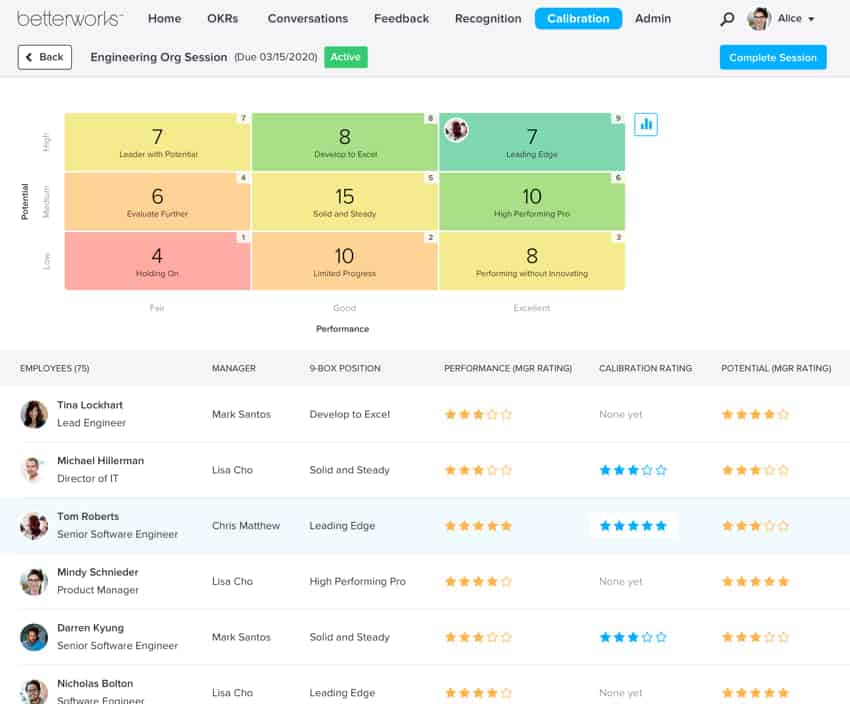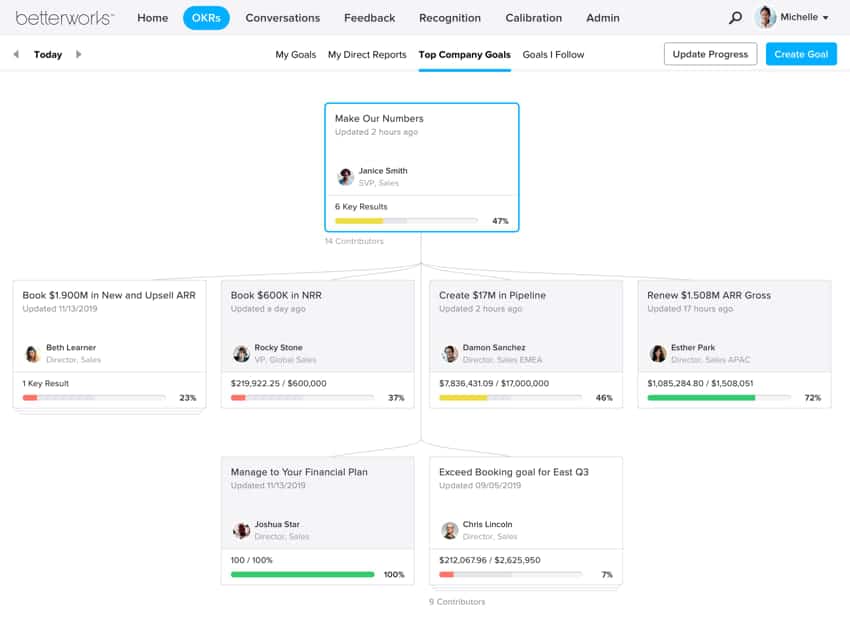Essential Elements of Employee Engagement
Yet strong employee engagement has been extremely challenging for many companies to achieve. According to a recent Gallup employee engagement survey, only 36% of U.S. employees feel engaged in their work and workplace. Globally, that number drops to 20%.
Fortunately, there are steps you can take to improve employee engagement at your organization.
To start, it’s important to understand what engagement isn’t. Employee engagement is often confused with employee satisfaction. They aren’t necessarily connected. The drivers of employee satisfaction may have nothing to do with the work itself. For example, an employee could be satisfied with their job because they’re able to work the hours they want or get specific benefits. But that doesn’t reveal anything about their connection to the work or motivation to succeed.
Employee engagement best practices and employee engagement activities go much deeper — and produce more powerful outcomes than employee satisfaction alone. When employees are engaged, they’re passionate about what they do. They’re motivated to do their work and to do it well. They actively participate in company meetings, communicate well with their colleagues and find fulfillment in their job.
While we can recognize the effects of employee engagement, defining the phenomenon and identifying its drivers can be more challenging. Here’s an overview of what employee engagement is, how it drives success in your organization and how you can increase it at your company.
What Is Employee Engagement?
- An employee’s willingness to give his or her best at work.
- An employee’s emotional commitment to the organization and its objectives.
Employee engagement doesn’t just happen on its own. It has to be a strategic priority. And it should be a strategic priority: Employee engagement can hugely benefit a business. Here’s why engaged employees are crucial for your success, and how implementing employee engagement best practices can drive positive business outcomes.

Why Does Employee Engagement Matter?
Highly engaged employees are passionate, innovative, and motivated to succeed. You can also expect them to be around a while. Without engagement, employees can become detached from their colleagues or work and ultimately drift away from your company, resulting in costly turnover.
Engaged employees feel a sense of purpose and community. They know their role in the company and how their work impacts the bottom line. Engaged employees feel aligned to the company’s larger objectives and are passionate about moving the business forward. Increasing employee engagement empowers business leaders to close the loop on people, strategy, and results.
A high level of engagement and emotional investment improves performance, too. When employees feel aligned with the company’s strategic goals, working towards something beyond the scope of their work offers a greater sense of purpose. Highly engaged employees are more motivated to succeed, leading them to perform at a higher level and with greater productivity.
Finally, employee engagement drives commitment to the business. Engaged employees feel emotionally invested in the company’s success. They aren’t just working for a paycheck — engaged employees have a better understanding of where the organization is headed and are committed to helping the company get there.
Employee Engagement Resources
Drivers of Engagement: What Matters Most?
Here are some key drivers of employee engagement:
Strategic Alignment
This is an essential component of engagement. Employees need to understand what the company’s goals and priorities are — and their own role in achieving them — in order to feel a sense of purpose in the organization. Strategic alignment helps employees see what they can accomplish within the organization, and inspires aspirational goal setting to both improve professionally and drive business results.
Transparent Communication
This is invaluable to both preserving and increasing employee engagement. For employees to become emotionally invested in their work, they have to trust the company and business leaders. Employees appreciate honesty. Where possible, keep employees informed of company changes and decisions. That communication should go both ways. Implement channels for employees to communicate transparently with business leaders so they always feel that their voice is being heard.
Processes in Place
In an engaged organization, employees aren’t just invested in their work or role in the company. They’re engaged with their colleagues and managers, too. Developing processes to facilitate collaboration helps employees work with each other better. Collaboration is especially important in hybrid or remote work environments. Employees can feel isolated, so developing processes that facilitate collaboration with colleagues can help employees remain engaged with the team.
A Clear Understanding of Progress
Aspirational goals and a sense of purpose are key to employee engagement. But goals alone can become overwhelming. Employees need measures demonstrating tangible progress towards their goals. An OKR framework can help employees set aspirational objectives while also keeping track of employee performance and progress. When employees see small gains, they become more engaged and gather momentum to meet their larger goals.
Frequent Feedback
To drive engagement, managers need to be more involved in their employees’ daily task flows. An important way to do that is by providing frequent performance feedback. Continuous performance conversations help employees feel more connected to both their work and their colleagues. Without this, employees don’t know where they stand with the company. They might feel alone, and that can prompt feelings of disengagement.
The Means to Get to Their Goals
Employees are more likely to be engaged with a company that helps them achieve their goals. Providing training and development opportunities helps employees see their own value and hone their skills to become better contributors. HR can help employees identify career opportunities within the company so that employees can envision reaching their full potential at your company.
When Should an Organization Measure Employee Engagement?
Since employee engagement is difficult to define, it can also be challenging to measure. Find an employee engagement software and vendor partner to support your efforts. Good software will provide customizable survey templates to help you generate the right questions to ask. And since not every HR team has a dedicated data analytics advisor, look for engagement software with intuitive analytic capabilities.
Be aware that when you survey employees, you set expectations. Only ask questions if you can act on employee responses. Constantly asking employees what would help them become more invested in their work without delivering on the survey results can cause them to become jaded. If that happens, surveys can actually become detrimental to fostering employee engagement.
Consult your employee engagement vendor partner for assistance in crafting impactful, actionable surveys.
How Can an Organization Improve Employee Engagement?
Improving employee engagement is a business imperative, so it’s important to take a strategic approach. Start by generating an employee engagement action plan, which brings your employee engagement strategy to life.
Look at survey data to determine your employees’ exact needs. This will help provide direction for your action plan. Review the data to determine where you need to take action first. Where are your biggest gaps in engagement? Where can you implement simple changes to make the fastest gains?
Employee engagement action plans can vary by issue or organization, but there are essential steps to take:
- Find the right leader. Who you select to lead the initiative depends on the plan’s content. Find someone with the right subject matter expertise and experience to bring it home.
- Organize and assign work. Some employee engagement action plans can be completed by one person. But more often than not, your action plan will have several steps and require delegation and division of labor to complete.
- Set clear objectives. An action plan isn’t the time to be vague. Set a specific goal and be very clear about what that goal is. Don’t leave anyone to guess whether they’ve achieved the objective or not.
- Clarify milestones demonstrating progress.In addition to long-term objectives, set smaller checkpoints along a comprehensive plan timeline. You need to be able to see your progress and pivot if it isn’t driving the results you expected.
There are countless ways to improve employee engagement. Here are a few employee engagement activity ideas to get you thinking:
- Implement a robust recognition program. Show employees you value their contributions and celebrate their successes.
- Encourage employees to talk with leaders. The more approachable company leaders are, the more employees will trust them.
- Improve cross-training opportunities. Empower employees to train in other parts of the business so they can gain a better sense of their own interests and their role in the larger picture.
- Offer volunteer benefits. Offering designated PTO for employees to volunteer at a charity of their choice demonstrates empathy — and that drives loyalty.
- Help employees follow their passion. Implement your own version of Google’s 20% model. Allow employees to spend a dedicated amount of time exploring their own passions and ideas for improving the company.
The best actions for you depend upon your specific workforce. Whatever actions you take, listening to your employees, and making an effort to meet their needs goes a long way in improving employee engagement. And with that engagement, a company’s future immediately gets a little brighter.
Ready to Unlock
Your Team's True Potential?












